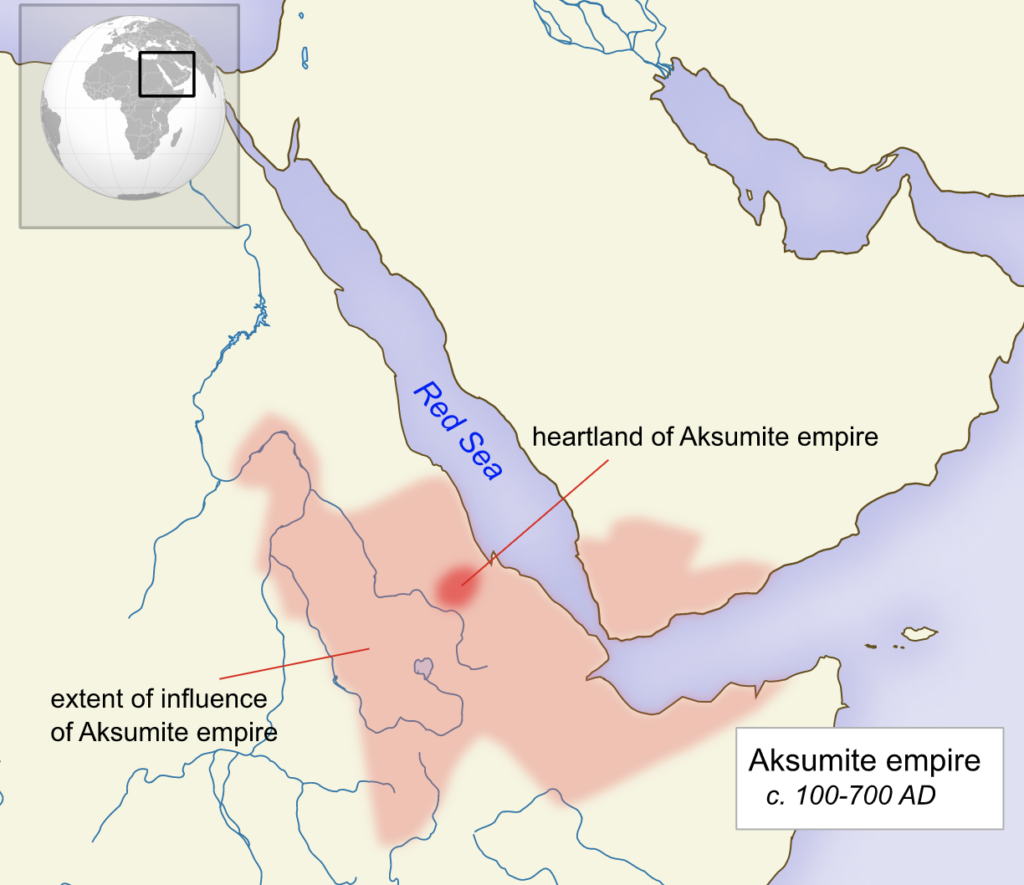Muslims have lived in Eritrea, Ethiopia and Somalia since the earliest days of Islam

By Sara Swetzoff
March/April 2022
Three historic mosques in the Horn of Africa chart the path of the first group of Muhajirun: Eritrea’s Sahaba Mosque, Ethiopia’s Al-Najashi Mosque and Somalia’s Mosque of the Two Qiblas.
The Sahaba Mosque, located in the Red Sea coastal town of Massawa, was built adjacent to the famous ancient port of Adulis, where they likely landed. In fact, many consider it the world’s oldest mosque. However, there is some uncertainty as to whether or not it predates the Quba Mosque on the outskirts of Madina.
The current structure is of later construction and now in disrepair, but the mosque retains its original qibla facing Jerusalem. Prayers are still held there occasionally, of course, with the worshippers facing the Kaaba in Makkah.
From the coast, the Muhajirun traveled about 190 miles southwest to Negash in current-day Ethiopia. The Christian Axumite king presumably permitted them to settle in that area, about 125 east of his capital city Axum. This city remains a sacred place for Ethiopian Christians, who believe that the Ark of the Covenant remains in its oldest church. Both Axum and Negash are in the Tigray region, one of the country’s eleven ethnic states.
Negash is therefore widely recognized as the Muhajirun’s first settlement, as evidenced by the excavation of a local seventh-century cemetery. The name of the local mosque, Al-Najashi, is the Arabic transliteration of “Negus,” which means “king” in ancient Geez. The king who hosted the Muslim refugees is buried within the mosque’s compound, as are several of the Sahaba who remained in Ethiopia.
Most of the Muhajirun returned to Arabia to rejoin their community and then relocated to Madina; however, a small group settled in Zeila, contemporary Somalia. There, in 627, they constructed the Mosque of Two Qiblas. The first qibla faces Jerusalem, and the second one faces Makkah.
Contemporary Challenges and Legacies
In early 2018, the Turkish Cooperation and Coordination Agency completed a multiyear restoration of the Al-Najashi Mosque for a very specific purpose: In July, Ethiopia and Eritrea signed a joint declaration of peace and reopened their shared border for the first time in decades. Eritrean Muslims celebrated on the 10th of Muharram by holding a gathering in the thousands at the mosque.
Unfortunately, it was damaged by shelling and reportedly looted during the current war. In December 2020, reports trickled out that Ethiopian and Eritrean troops were responsible for the damage. In an interview with BBC Amharic soon after, Abebaw Ayalew (deputy director, Ethiopian Heritage Preservation Authority), stated that a professional team was on its way to document the damage to both the Al-Najashi Mosque and a nearby church and to chart a plan for repairs. He stated, “These sites are not only places of worship. [They are] also the heritage of the whole of Ethiopia.”
Meanwhile, members of both diasporas commemorate the First Hijra’s significance worldwide. In 1986, Ethiopian Muslims established The First Hijra Muslim Community Center in Washington, D.C. Located on Georgia Avenue just a mile north of the nation’s preeminent historically Black college, Howard University, this mosque has become an important part of Washington’s Pan-African landscape.
The foundation’s website explains the significance of its name:
“The meaning and the significance of ‘Hijra’ is embodied in the Islamic calendar. Since its inception, the Islamic calendar represents a history of perpetual struggle between truth and falsehood, freedom and oppression, light and darkness, and between peace and war. The migration to Ethiopia and generous offer of political asylum to the oppressed companions of Prophet Muhammad (pbuh) was the birth of freedom of expression and beliefs, whereas the Second Migration of the Prophet Muhammad to Madinah celebrates the end of oppression.”